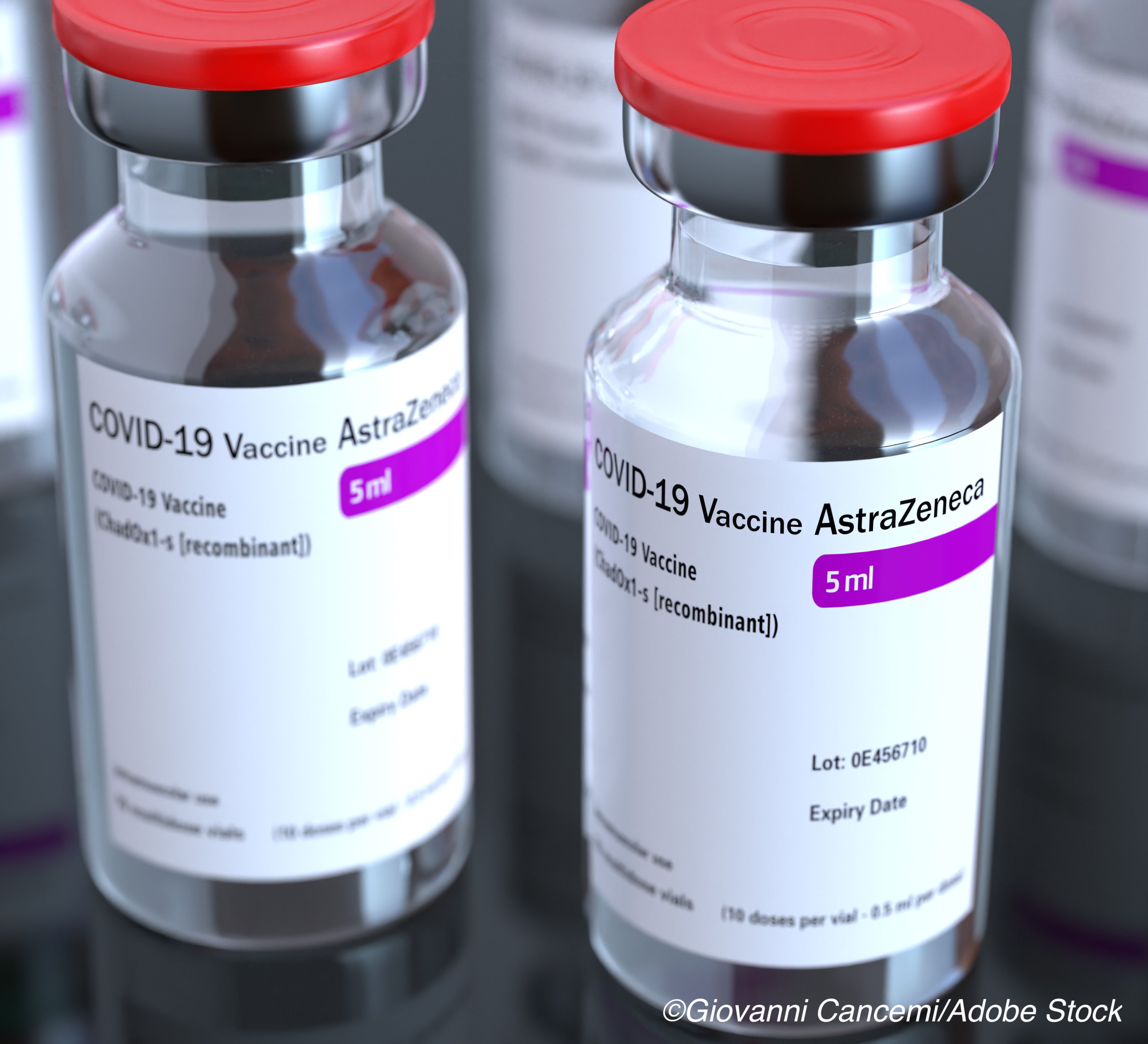
Early results from three trials assessing the safety and efficacy of the Oxford University/AstraZeneca Covid-19 vaccine, AZD1222, suggest that a single dose of the vaccine is 76% effective in preventing SARS-CoV-2 infection — and the shot may also reduce onward transmission of the virus, researchers reported.
Oxford University explained that the study results — which were published in Preprints with The Lancet and are currently under peer review at The Lancet — showed “a single standard dose (SD) of the vaccine reduced PCR positivity by 67%, and that, after the second dose, the SD/SD schedule reduced PCR positivity by 49.5% overall,” according to Andrew J. Pollard, MRCP, FHEA, FIDSA, FRCPCH, and colleagues from the Oxford Vaccine Group. “These data indicate that [AZD1222], used in the authorized schedules, may have a substantial impact on transmission by reducing the number of infected individuals in the population.” The study authors also reported that participants ages 18-55 years who received a second vaccine dose more than 12 weeks after the first “had antibody titres 2-fold higher than those who received the second dose within 6 weeks of their initial vaccination (GMR 2.05, 95%CI 1.99, 2.12).”
AZD1222, a chimpanzee adenoviral vectored vaccine that is currently authorized for use in the U.K., India, Nepal, Bangladesh, Argentina, Brazil, Mexico, and the European Union, is the first Covid-19 vaccine to date with evidence suggesting it can reduce viral transmission.
Some officials, such as British Health Secretary Matthew Hancock, hailed these results, telling the BBC that they prove that “vaccines are the way out of this pandemic,” and later tweeting that that “this vaccine works & works well.” However, some scientists cautioned that further analysis of the data is needed before the celebrations begin.
“While this would be extremely welcome news, we do need more data before this can be confirmed and so it’s important that we all still continue to follow social distancing guidance after we have been vaccinated,” Doug Brown, chief executive of the British Society for Immunology, told the U.K.’s Science Media Center. For example, as CNN pointed out, the current analysis did not directly measure transmission, opting to assess transmission risk via polymerase chain reaction (PCR) testing among study participants rather than using contact tracing to track subsequent infections.
Oxford University noted that the exploratory analyses presented in this preprint study “suggest that it is the dosing interval and not the dosing level which has a great impact on the efficacy of the vaccine,” a question which has dogged the Oxford/AstraZeneca vaccine since preliminary results found that using a half dose of the vaccine seemed to offer better protection than a full dose—an anomaly that was only observed due to a mistake in vaccine administration among study participants.
This efficacy analysis included 17,177 participants (8,948 from the U.K., 6,753 from Brazil, and 1,476 from South Africa), of whom 8,597 received the AZD1222 vaccine while the remaining 8,580 served as the control group. Most participants who received the vaccine were given two standard doses (SD/SD group), while one group of participants from the U.K. received a low dose (LD) as their first dose followed by a second dose (LD/SD group).
The study authors found that overall vaccine efficacy for the LD/SD and SD/SD groups was 66.7% (57.4%, 74.0%) at >14 days after the second dose. Vaccine efficacy after a single standard dose from day 22 to day 90 post-vaccination was 76% (59%, 86%), “and modeled analysis indicated that protection did not wane during this initial 3-month period,” they wrote. “Similarly, antibody levels were maintained during this period with minimal waning by day 90.”
They added that, in the SD/SD group, following the second dose, “efficacy was higher with a longer prime-boost interval: [vaccine efficacy] VE 82.4% 95% CI 62.7%, 91.7% at 12+ weeks, compared with VE 54.9%, 95%CI 32.7%, 69.7% at <6 weeks. These observations are supported by immunogenicity data which showed binding antibody responses more than 2-fold higher after an interval of 12 or more weeks compared with and interval of less than 6 weeks GMR 2.19 (2.12, 2.26) in those who were 18-55 years of age.”
The study authors also conducted PCR testing on a subset of participants and found that “a single standard dose of the vaccine reduced PCR positivity by 67%, and that, after the second dose, the SD/SD schedule reduced PCR positivity by 49.5% overall.”
Pollard and colleagues acknowledged limitations to their study; for example, they noted that the studies included in this analysis were not designed to determine if vaccine efficacy differed by dose interval, and that the data on varying intervals arose “due to the logistics of running large-scale clinical trials in a pandemic setting.” They also cited limited follow-up following second vaccine dose as another limitation.
John McKenna, Associate Editor, BreakingMED™
Cat ID: 31
Topic ID: 79,31,730,933,31,926,192,927,925,934

